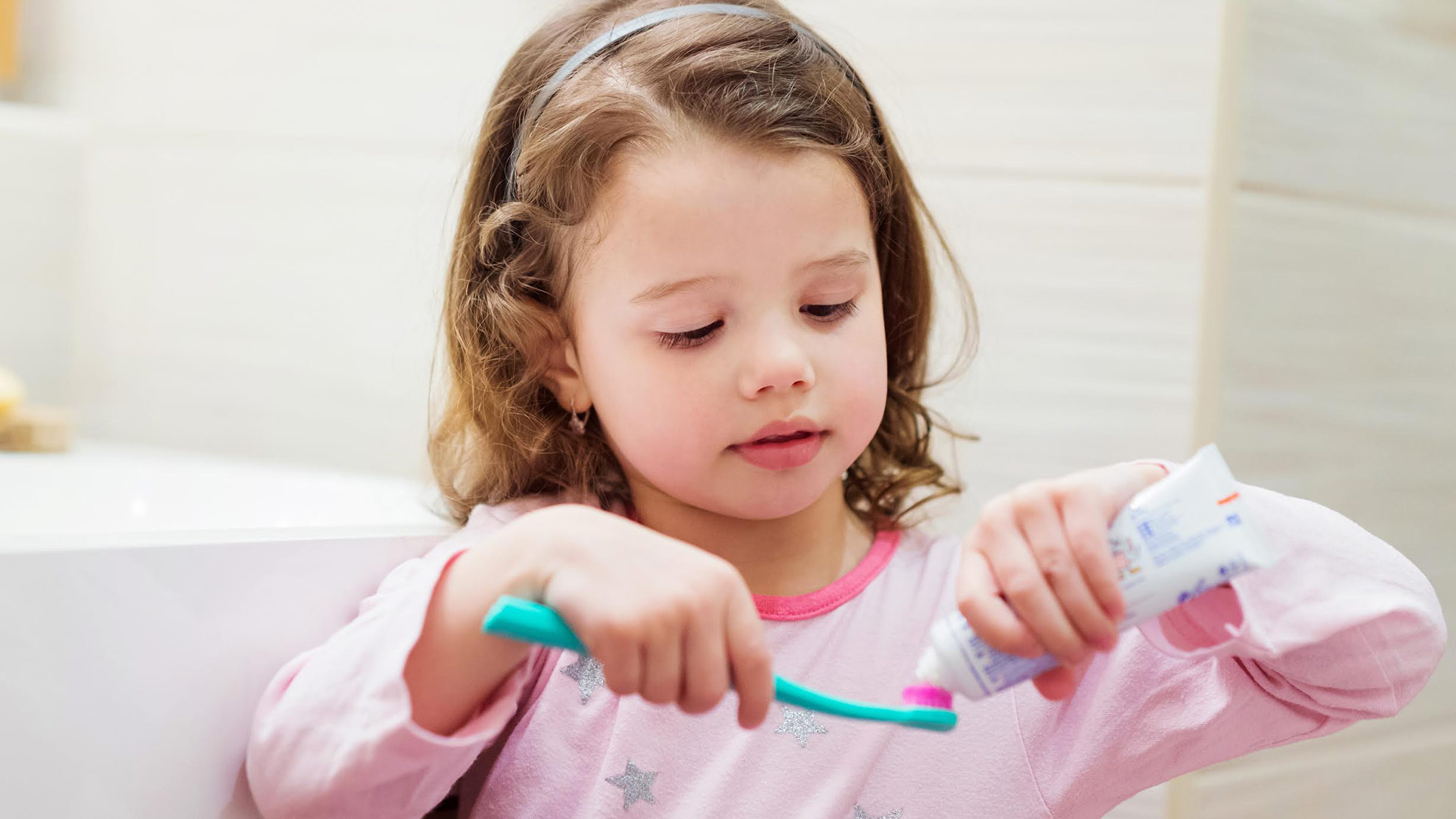Instructions for Toothpaste?

Somewhere after their second birthday, it is time to teach your kids how to brush their teeth. Teeth-brushing is a simple but important habit to develop. You know where we are going with this right? Thinking before buying is another simple but important habit to develop.
We thought of the parallels between good oral hygiene and respect for money when a reader recently confessed that he had initially thought of Gift Surveys as “instructions for toothpaste”…he just wasn’t sure he needed our tools to give his kids money-smarts. But as we discuss below, and Greg discovered over the holidays, Gift Surveys are incredibly effective at preventing the “financial cavities” no one wants a family member to develop.
Why is it that teeth-brushing is widely accepted as a must-have in our children’s lives, but not an age-appropriate respect for money?
How long did your children observe teeth brushing before they joined the ranks of daily brushers? Despite all of that observation, did they automatically know how much toothpaste to use, or to never swallow the foam brushing produces? Ask your kids where money comes from? We’ve heard some fascinating answers in our travels, such as: a) A window across the street from Tim Horton’s; b) The card in Mom’s purse; and c) Aunt Kira’s phone.
Our children learn a lot through observation, but not everything we want them to know. In the case of money, given all the different payment schemes that exist today, we need to be particularly clear about the fact that we work to earn wages that we can withdraw from “bank windows”; that only when we get paid do we have money to spend, and that our “credit or debit cards” are just a tool we can use to buy things. We need to explain that because the wages we earn aren’t unlimited, we want to spend them with purpose and intent. Gift Surveys give families natural opportunities to have those important conversations – at least twice a year – when kids are preparing birthday or holiday wish-lists. They give those important conversations structure, purpose, and a time-line. The lessons they deliver are quick, but meaningful.
“ Before they use them… people may see Gift Surveys as synonymous with a set of instructions that come along with toothpaste, and think to themselves, Do I really need these? But they are so easy to complete…and really do result in kids understanding the full value of a request…”
Mr. Greg Gamsson, Toronto
We know we don’t have to be “experts” to give our kids good oral hygiene. Parents from every walk of life teach their kids how to brush their teeth – not only Dentists! Experience has taught us that if our children consistently use simple tools, they can enjoy a cavity-free smile for life. Similarly, simple tools that help them practice thinking before buying can help them develop lasting financial literacy.


Where the analogy ends, is that once we teach our kids how to look after their teeth, that job is pretty much done, but money lessons are different for every age and stage of childhood. Allowance best practices are quite different for kids 12 and under, versus those for Teens. Younger children tend to ask for a greater number of less expensive items than older kids, and fewer experiences. This is why we have two main categories of Gift Surveys (Items/Experiences) and six platforms within our “Items” silo (Toys, Clothes, Sports Equipment, Electronics, Formal Wear and Other) so that we can help 9 year olds and even 18 year olds quickly research if a request makes sense, before they make it. Of course the number of uses required to justify purchasing a Prom Dress is much lower than for new Hockey Skates.
If you think incorporating Gift Surveys into gift-giving traditions can’t possibly help this generation develop some lasting financial literacy, take a walk down memory lane, to a time before something as simple as good oral hygiene was practiced. The fact of the matter is that the adoption of regular tooth brushing saw cavities move from a rapidly progressing disease of childhood, to a slowly progressing disease throughout adulthood. It’s true that hardly anyone needs the instructions on toothpaste anymore, but that’s because we’ve all been taught how to use it!




